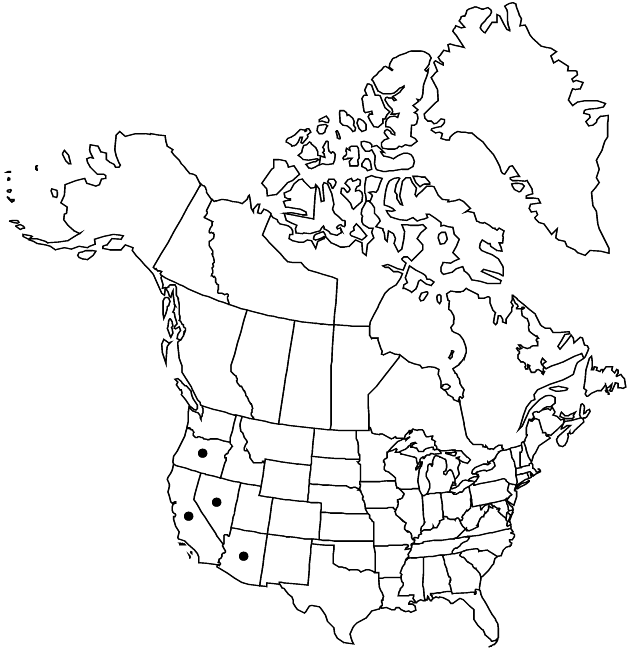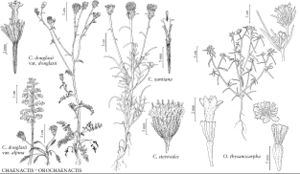Chaenactis xantiana
Proc. Amer. Acad. Arts 6: 545. 1865.
Plants 10–40 cm; proximal indument grayish, sparsely arachnoid, early glabrescent (usually glabrous by flowering). Stems mostly 1–5 (–12); branches proximal and/or distal. Leaves basal (withering) and cauline, (1–) 2–6 cm; largest blades linear or ± elliptic, ± plane or terete, ± succulent, 0–1-pinnately lobed; lobes 1–2 (–5) pairs, remote, ± terete. Heads mostly 1–5 (–7) per stem. Peduncles 1–5 (–8) cm, glabrous (and ± expanded) distally. Involucres broadly obconic to campanulate. Phyllaries: longest 10–18 mm (surpassed by florets); outer distally tomentulose-puberulent in fruit (proximally glabrous, not stipitate-glandular), apices ± squarrose, blunt, pliant. Florets: corollas (diurnal) dirty-whitish to pinkish, 6–10 mm (± equal to cypsela lengths, anthers exserted); peripheral corollas erect to ascending, actinomorphic, scarcely enlarged. Cypselae 5–9 mm; pappi of 8 scales in 2, abruptly unequal series, longest scales 5–9 mm. 2n = 14.
Phenology: Flowering late Mar–Jul.
Habitat: Open, deep, loose sandy (rarely gravelly) soils, arid and semiarid shrublands, chaparral
Elevation: (100–)300–2500 m
Distribution

Ariz., Calif., Nev., Oreg.
Discussion
Selected References
None.
Lower Taxa
"longest" is not a number.
